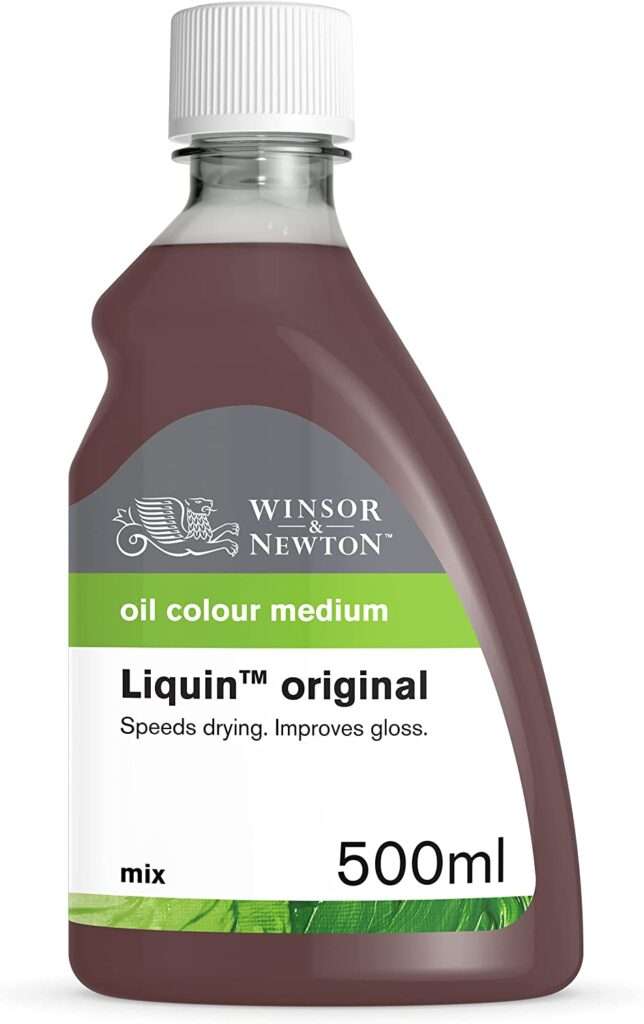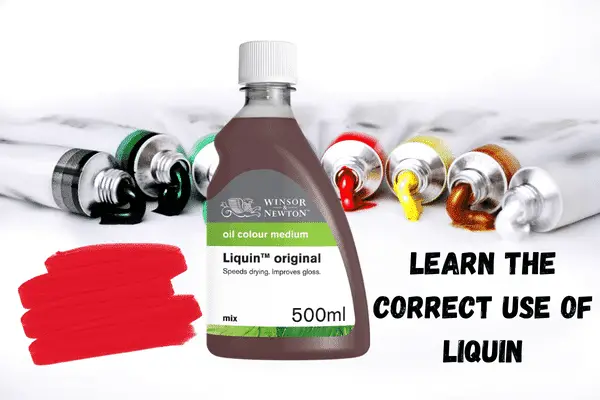Liquin is the most using medium by professional artists. It is actually a glazing medium and also a drying agent which makes your paint dries little bit faster. It is also yellow like linseed oil but it is different as it contains less yellow form. It also works great for landscape paintings. When liquin added in painting, it alters the viscosity of paint and makes it thicker which in turn make the paint dry faster.
This is actually an alkyl resin sold by Winsor & Newton which is actually a famous oil painting medium used by so many popular artists in oil painting. Some beginner’s often get confuse by its intense scent when they use it for the first time. It can be toxic because it contains some harmful fatal if swallowed. It has been mentioned at the back which often confuse beginner’s when they are trying to learn about this.

The correct way to use liquin in oil painting
If you don’t know the correct use of liquin and you are using it with cadmium paints . You could get it all over your hand. Then you started eating a sandwich with hands. It could cause cancer. But if you are aware of all the necessary precausetions than it will be fine. You can only use it correctly if you take care of yourself from the hazardous effects of this mixture.
How much amount of liquin you should use
the best way to use liquin is to premix all of your paint with a relative ratio of paint to liquin. You don’t have to use a 50/50 ratio but instead find what ratio you like best. It could be 20 percent Liquin and 80 percent paint. Pigment size of paints is so much important because it contains the value of oil in your paint which also impact the ratio of liquin.
Oil also relates to drying time in the paint. For example, Titanium white is a very opaque pigment that does not contain so much oil. That’s why it dries faster as compared to cadmium yellow which takes a lot of time to dry due to the presence of a lot of oil.
If you are mixing liquin in such a pigment which contains so much oil than there you have to add little amount of it. The additional value of oil is not good which could cause cracks in the painting. You should not put very thin layers of gamsol super diluted washy pigments on your liquid, even if it is dry.
Point to notice! When you are adding liquin in any pigment, dop not add more than a 30 percent ratio of it. The reason is that if you are being consitent in your painting process and creating layers of paint. It actually creates a stronger bond between the layers which is very important. But additional value of liquin will make the paint so much oily and it will going to take a lot of time to dry.
Procedure to add liquin in paints
Shake the bottle gently before use then takes out your pigment and put a little amount of liquin at the corner of your palette. There must be a great ventilation in the environment because you must have to keep yourself away from the scent of liquin. Take paint at one side and liquin at the other use. Use a palette knife and add a small amount of liquin to the paint. Mix it until the paint become a lot softer and glossy. This mixture will be extremely helpful if you are going to glaze because glazing needs proper dry paint.
liquin vs linseed
Both linseed oil and liquin are good mediums for oil painting but both have some differences which are given below:
| Linseed Oil | Liquin |
| Slow dryer | Fast dryer |
| Less costly | More costly |
| Produce yellow pigment in a greater amount | Also, produce yellow pigment but is a smaller amount |
| Can be use as a varnish layer | cannot be use as a varnish layer |
| creates an oily surface | creates a harder surface |
can you use liquin with water mixable oils
Yes, you can. Oil paints are generally maixable with any medeium. Water-mixable oil paints are different from traditional oil paints because they can be mixed with water. But when you mix lqiun with them, they also provide the same unique result. This is a unique way of oil painting in modern world.
FAQs
Is liquin toxic?
Yes, liquin could be toxic if you don’t do any precautions. Prefer a ventilated environment to get comfort from its toxic scent. It could cause cancer.
Does liquin yellow?
Yes, liquin also yellow but not that much like linseed oil. Make sure to use it in the ratio of 25/75 to avoid any yellowish pigmentation.
How long does liquin take to dry?
It depends on the pigment. Usually it will take between 1 to 5 days to completely dry.
Can I use liquin as a varnish?
No, you can’t use it because of its unpleasant and harmful scent.
How much liquin to add to oil paint?
It depends on the artist or the paint. Usually 1/4 of liquin in paint is enough for best results.
Conclusion
Like other mediums, linseed is also a medium that is beneficial to make a greater piece of art. It is the best glazing medium and a fast drying agent. It could be dangerous for health. Use it properly and according to the instructions.
Help us in improving our content by giving recommendations in the comment section. Be health conscious to be a successful artist.
